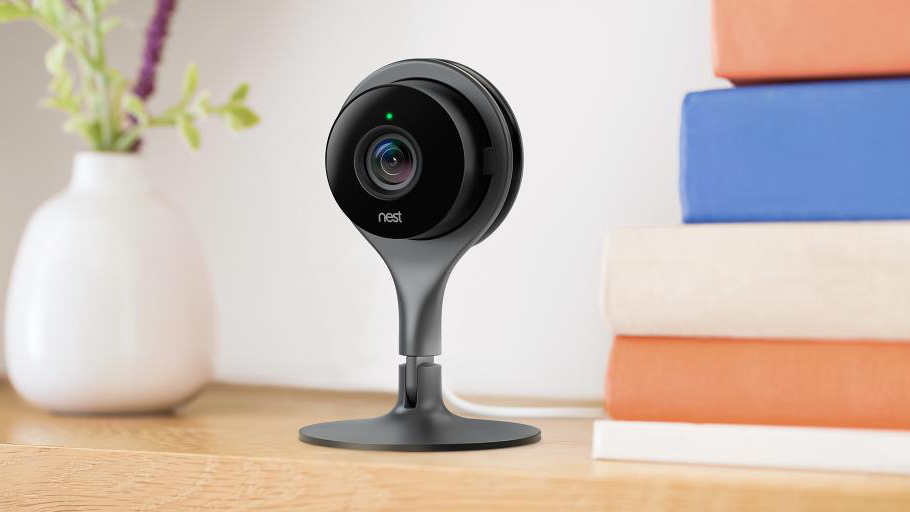Nest introduces safety camera, teaches Protect to know when you're making toast

At a press event today, Nest refreshed its product line with some new devices and new features.
First up is Nest's brand new device, the Nest Cam, the home security camera designed to give owners the ability to see the going-ons in their house when they're not there.
Designed like a classic Dropcam, the Nest Cam will continually send its video stream to the cloud. You can bend it, twist it, put it on a wall - and it comes with a mount that can stick onto a wall or fridge. There's also a tripod accessory so you can latch it onto just about anything.
Nest Cam will offer 1080p resolution, which should provide an adequately sharp image, as well as an 8X digital zoom. The Clear Zoom feature also helps sharpen the picture when you zoom in.
Nest also highlighted that its cam offers great night vision thanks to eight infrared LEDs. We got a preview of how sharp the night cam is, and it certainly seemed better than we'd expect.
It's smart, too: a unique detection algorithm will detect any strange happenings and alert you on your smartphone with a live feed. You can even select certain objects in the room that you want Nest Cam to pay particular attention to.
Interestingly, Nest is piloting a program for YouTube creators to stream using the Nest Cam. The program will stream to YouTube Live and give fans a behind-the-scenes look at popular personalities. Popular camera feeds will also stream to YouTube using the Nest Cam.
Sign up for breaking news, reviews, opinion, top tech deals, and more.
The camera costs $199 (£159), available for order now, and will ship next week. To make more of Nest camera, you'll need to subscribe to Nest Aware for $10/£8 a month.
Smoke without fire
Next up is a second-generation Nest Protect. "It can learn more, know more, and you can worry less," said Nest's Maxime Veron. The first generation had one type of smoke sensor good at detecting small fires, but Nest has improved the device's accuracy with a split-spectrum sensor which can pick up both slow and fast-burning fires. The reason? In the 1970s, Nest says, a fire could take about 30 minutes to engulf a room. Today, it can take just five.
The new Protect can also better tell if smoke is less threatening - a bit of excess smoke from a toaster, for example - and won't bleep unless if feels there's an actual prospect of danger.
Third, Nest is updating existing Protect smoke alarms with two new features. The first is a fan shutoff, which will switch off your fans if it detects smoke in your house. The second feature is safety temperature alerts, which will notify your smartphone if your house temperature reaches an unsafe level.
Finally, the new App Silence feature will (as its name suggests) let you silence your smoke alarm with your phone. It also costs $99/£89 (for both the wired and battery versions), available to order today, and will be available next month.
Total control
Nest has, for the first time, introduced an app that lets users control every single one of their Nest products.
Nest app 5.0 will work on any device and lets users oversee all their Nest devices as well as their current Dropcams. The app works on the browser as well as iOS 8 and up and Android 4.0 and up. The updated Nest app is up for grabs in Google Play and the App Store right now.

Hugh Langley is the ex-News Editor of TechRadar. He had written for many magazines and websites including Business Insider, The Telegraph, IGN, Gizmodo, Entrepreneur Magazine, WIRED (UK), TrustedReviews, Business Insider Australia, Business Insider India, Business Insider Singapore, Wareable, The Ambient and more.
Hugh is now a correspondent at Business Insider covering Google and Alphabet, and has the unfortunate distinction of accidentally linking the TechRadar homepage to a rival publication.